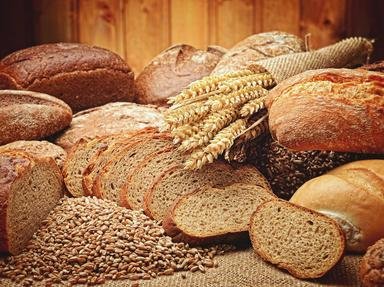Quiz Answer Key and Fun Facts
1. Here is one of the most widely-eaten grains in the world - most Asian meals would be incomplete without its inclusion. Shown is the brown variety, which still retains the bran and the germ that are removed to produce the white variety. What grain is this?
2. This grain is the world's most widely grown grain by weight, although it only ranks second in terms of human consumption, as much of what is produced has alternate uses, both for feeding stock and in industry. I grew up calling it corn, but most of the world uses which of these names for this starchy grain first domesticated in the Americas?
3. This is one grain of rye, still in its husk. Which of these is NOT a way in which rye is commonly consumed?
4. This is a simple variant on a dish that is eaten widely in Africa, especially in the northern parts. What is the name for this dish, made from semolina, a coarsely ground by-product of the milling of durum wheat?
5. Your grandparents probably were told to eat a hot cereal made from this grain because it would stick to their ribs, and keep them from getting hungry again for a long time. During the 1980s it was more common to extol its health benefits in terms of its ability to lower blood cholesterol levels. Which grain is shown here, ready to be turned into a bowl of porridge?
6. I always wondered what they were eating when I read books set in the southern part of the United States that referred to eating grits for breakfast. The picture shows a waffle and a bowl of grits, also called hominy grits. In what liquid is corn (maize) soaked to produce the hominy from which grits are made?
7. The common name for Fagopyrum esculentum comes from the fact that its triangular seeds resemble those of the beech tree on a smaller scale. Which of these is often used to make noodles in Japan, China and Korea?
8. This is a tabouleh salad, although it has significantly less parsley than I expect to see in a salad with that name. What is the name for the dried and parboiled wheat that is central to this dish?
9. Although many people in developed countries would associate millet with bird food, it is an important staple crop in some parts of the world. In what kind of climate is pearl millet likely to be a staple food?
10. The seeds of this plant are often malted as the first step in producing beer. What grain is shown here?
Source: Author
looney_tunes
This quiz was reviewed by FunTrivia editor
WesleyCrusher before going online.
Any errors found in FunTrivia content are routinely corrected through our feedback system.


